

EXPECT THE EXTRAORDINARY

Meant to be Shared
Picture a moment of quiet anticipation, as the first notes of a breathtaking symphony fill the air. We invite you to experience that special moment this season where extraordinary music and unforgettable memories come together.
D O N ’ T M I S S A M O M E N T !
When you subscribe, you provide vital support to your Cleveland Orchestra and enjoy these exclusive benefits:
• The BEST seats at the BEST prices
• FREE and easy ticket exchanges
• Purchase your parking in advance
• 20% off additional ticket purchases
• 33% off subscription to Adella .live, our digital home
• 10% off at The Cleveland Orchestra Store
• Money back guarantee
Tugan Sokhiev







SYMPHONY NO. 9 Conducted










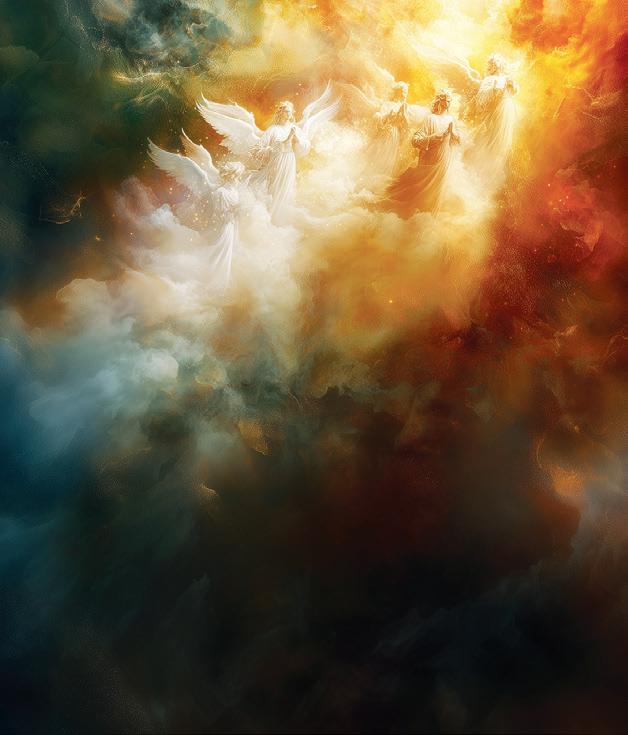
THE MUSIC

An Evening with Yo -Yo Ma
Thursday, November 6, 2025, at 7:30 PM
James Feddeck, conductor
Johann Strauss , Jr. (1825–1899)
Wolfgang Amadeus Mozart (1756–1791)
Antonín Dvořák (1841–1904)
Antonín Dvořák
Overture to D ie Fledermaus
minutes Overture to D on Giovanni, K. 527 5 minutes Carnival Overture, Op. 92
I N T E R M I S S I O N
Cello Concerto in B minor, Op. 104
I. Allegro
II. Adagio ma non troppo
III. Finale: Allegro moderato
Yo-Yo Ma, cello
Total approximate running time: 1 hour
minutes
minutes
minutes
minutes
Thank you for silencing your electronic devices.
Overture to Die Fledermaus
by Johann Strauss , Jr.
B O R N : October 25, 1825, in Vienna
D I E D : June 3, 1899, in Vienna
▶ C O M P O S E D : 1874
▶ W O R L D P R E M I E R E : April 5, 1874, at the Theater an der Wien in Vienna
▶ C L E V E L A N D O R C H E S T R A P R E M I E R E : March 1, 1934, led by Music Director
Artur Rodziński
▶ O R C H E S T R AT I O N : 2 flutes (2nd doubling piccolo), 2 oboes , 2 clarinets , 4 horns , 2 trumpets , 3 trombones , timpani, percussion (snare drum , bass drum , tambourine, triangle, chime), and strings
▶ D U R AT I O N : about 10 minutes
N I N E T E E N T H- C E N T U RY V I E N N A was dominated by two forms of popular music the operetta and the waltz. Both were much discussed in the city’s famous coffee shops, and their best tunes were written up for performance everywhere at home, in the streets and parks, as well
The waltz had swept across Europe in the closing decades of the 18th century. The word itself came from the German verb walzen, which was originally not much more specific than the English word “dance.” Eventually, the waltz overtook the minuet in popularity, and the verb
The operetta’s storyline of disguises , romantic trysts , and mistaken identities , plus a full- fledged party onstage with , of course, a series of great waltzes has made it one of the composer’s most popular works . parks, as noun, English
as in theaters, ballrooms, and casinos.
A great “Golden Age” of operetta (filled, of course, with waltzes) blossomed in the city beginning in the 1860s. Johann Strauss, Jr., then at the height of his popularity, turned his attention to the theater as Vienna’s economy boomed throughout the next decade
became a noun, first in English and then in German. In 1819, Carl Maria von Weber’s Invitation to the D ance set the pattern for what quickly became the typical Viennese waltz not one dance, but a string of dances written together as a group, often alternating slower and faster sections, with the various tunes

repeated and developed, almost like a short symphony
The waltz experienced renewed popularity throughout the 19th century, propelled by the artistry and showmanship of the Strauss family of composers, beginning with Johann Strauss, Sr. (1804–1849). His touring orchestra, along with that of his even more famous son, Johann, Jr., spread the waltz craze throughout Europe and even to American shores.
Our evening begins with Strauss, Jr ’s Overture to D ie Fledermaus ( The Bat), premiered in 1874. The operetta’s storyline of disguises, romantic trysts, and mistaken identities, plus a full-fledged party onstage with, of course, a series of great waltzes has made it one of the composer’s most popular works. The overture features some of its best tunes, all mixed together as a perfectly exciting prelude to much fun and merriment.
Eric Sellen
The whirling, bustling energy of a Viennese ballroom is vividly depicted in this 1906 painting by Austrian artist Charles Wilda
Eric Sellen is The Cleveland Orchestra’s editor emeritus He previously was program book editor for 28 seasons
Overture to Don Giovanni, K . 527
by Wolfgang Amadeus Mozart
B O R N : January 27, 1756, in Salzburg
D I E D : December 5, 1791 , in Vienna
▶ C O M P O S E D : 1787
▶ W O R L D P R E M I E R E : October 29, 1787, conducted by the composer
▶ C L E V E L A N D O R C H E S T R A P R E M I E R E : November 7, 1935, led by Music Director
Artur Rodziński
▶ O R C H E S T R AT I O N : 2 flutes , 2 oboes , 2 clarinets , 2 bassoons , 2 horns , 2 trumpets , timpani, and strings
▶ D U R AT I O N : about 5 minutes
“D O N G I O VA N N I ! You invited me to supper and I have come.” These words introduce one of the most dramatic scenes in the history of opera: the entrance of the Stone Guest (the statue of the Commendatore, or Governor). Don Giovanni killed the Commendatore in the very first scene of the opera, and at the end, his statue appears at the Don’s house to carry him off to Hell. It is fitting that this protagonist should be punished by a supernatural being. No ordinary womanizer, Don Giovanni is an
The
slow introduction (in Mozart’s most dramatic key, D minor) anticipates the moment where the Stone Guest enters the dining room .
almost mythical figure, symbolizing the boundless ambition of modern man who challenges the traditional world order and conventional morality.
The full title of Wolfgang Amadeus Mozart’s opera contains the phrase II dissoluto punito (The Libertine Punished); Don Giovanni must pay for his transgressions with his life. Yet he is still a domineering presence compared to the other characters. The men his servant Leporello and his rivals Don Ottavio and Masetto are all powerless in their attempts to bring him down The women Donna Anna, Donna Elvira, and Zerlina fall under his spell but ultimately resist his influence. In the end, it takes a transcendent power to defeat him
The overture to D on Giovanni opens with an evocation of the Don’s damnation. The slow introduction (in Mozart’s most dramatic key, D minor) anticipates
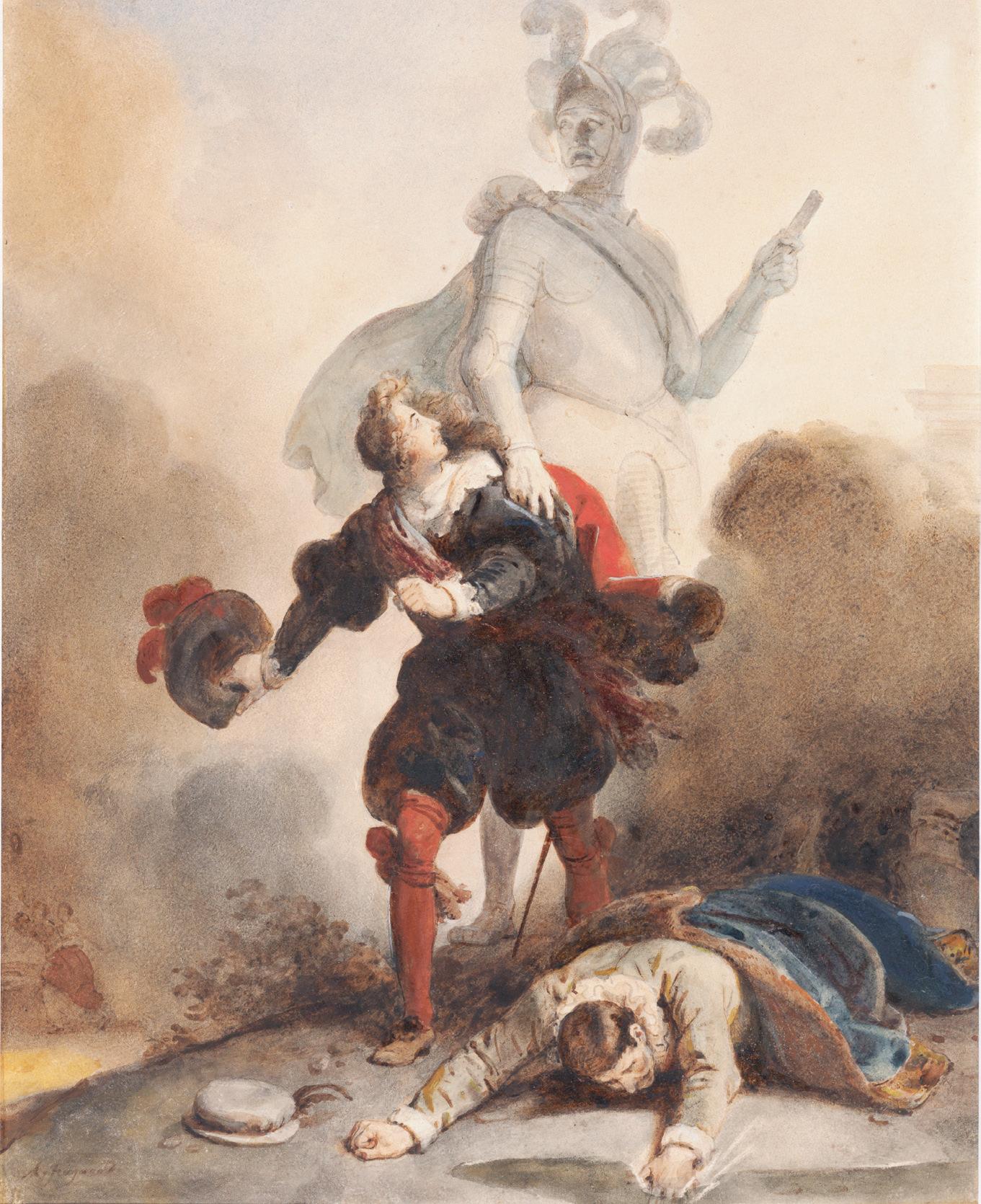
the moment where the Stone Guest enters the dining room. The main section of the overture (now in D major) does not return in the opera, yet the unusually high energy seems to justify those who hear it as the Don’s musical portrait. The strong rhythmic profile
of its themes, the frequent dynamic contrasts, and the close succession of imitative entries in the middle section all carry the same uncommon energy that animates this character, one we can’t help but admire, no matter how reprehensible he is.
Peter Laki
Laki is a musicologist and frequent lecturer
Peter
on classical music He is a visiting associate professor of music at Bard College
The statue of the Commendatore confronts Don Giovanni in the final scene from Mozart’s opera , as seen in this painting by artist Alexandre-Évariste Fragonard.
Carnival Overture, Op . 92
by Antonín Dvořák
B O R N : September 8, 1841 , in Nelahozeves , Bohemia (present- day Czech Republic)
D I E D : May 1 , 1904, in Prague
▶ C O M P O S E D : 1891
▶ W O R L D P R E M I E R E : April 28 , 1892 , with the composer leading Prague’s National Theater Orchestra
▶ C L E V E L A N D O R C H E S T R A P R E M I E R E : February 3, 1924, conducted by Arthur Shepherd
▶ O R C H E S T R AT I O N : 2 flutes , piccolo, 2 oboes , English horn , 2 clarinets , 2 bassoons , 4 horns , 2 trumpets , 3 trombones , tuba , timpani, percussion (cymbals , tambourine, triangle), harp , and strings
▶ D U R AT I O N : about 10 minutes
O V E RT U R E S W E R E O R I G I N A L LY orchestral pieces introducing an opera or theater performance. In the 19th century, however, they gradually became independent from the stage. Beethoven was one of the first to write concert overtures
separate concert pieces, but it was not until his 50th year that he began work on concert overtures that were planned as such from the start. In 1891, he conceived a cycle of three overtures to be performed together as an orchestral
Dvořák thought very highly of [these overtures]. In 1893, he wrote to his publisher, Fritz Simrock: “I think they are my best orchestral works , ” even though he had already finished his “New World” Symphony by that time . .
(The Consecration of the House), followed by such composers as Mendelssohn (The Hebrides), Brahms (the Academic Festival and Tragic overtures), and Tchaikovsky (1812 O verture).
Antonín Dvořák had published several of his early opera overtures as
trilogy. He entitled the cycle Nature, Life, and Love; the individual overtures were called In Nature’s Realm, Carnival, and O thello. Dvořák thought very highly of this cycle. In 1893, he wrote to his publisher, Fritz Simrock: “I think they are my best orchestral works,” even

though he had already finished his “New World” Symphony by that time He presented the cycle both at his April 1892 farewell concert in Prague before leaving for the United States and at his first concert in New York later that year.
The second overture, Carnival, is like a miniature symphony in four “movements,” played without a break. But the last “movement” is nothing but a recapitulation of the first. Therefore, the overture can also be seen as an irregular single movement, with slow and fast sections inserted in the middle. Whichever way we look at it, the work is
In 1891, the same year he composed his Carnival Overture, Dvořák received an honorary doctorate from the University of Cambridge He is seen here in his graduation regalia
framed by a happy and exuberant carnival march with cymbals, tambourine, and triangle. Then the brass and the percussion drop out, and the violins play an expressive melody in a distinctly operatic style.
The third theme is introduced by the violins as the percussion reenters in a hushed pianissimo This theme grows to a full orchestral fortissimo, only to be suddenly interrupted by the winds, violins, and harp (the only instrument that has been silent so far). This passage serves as a transition to the lyrical slow section featuring solos for the woodwinds and violin. The melody of this section is also identical to the main theme of the overture In Nature’s Realm, providing a strong link between the two works of the cycle.
Another sudden interruption brings us to the next section, which has the playfulness and vibrancy of a scherzo (the third movement in a typical symphony). Thematically, however, this is not an independent section since it is based on the transformations of some of the material heard at the beginning Finally, the march returns, and the piece ends in a festive mood with exquisite, joyful abandon.
Peter Laki
Cello Concerto in B minor, Op . 104
by Antonín Dvořák
B O R N : September 8, 1841 , Nelahozeves , Bohemia (present- day Czech Republic)
D I E D : May 1 , 1904, in Prague
▶ C O M P O S E D : 1894 – 95
▶ W O R L D P R E M I E R E : March 19, 1896, by the London Philharmonic Society, with Leo Stern as soloist and the composer conducting
▶ C L E V E L A N D O R C H E S T R A P R E M I E R E : January 10, 1924, with Pablo Casals as soloist , conducted by Music Director Nikolai Sokoloff
▶ O R C H E S T R AT I O N : 2 flutes , piccolo, 2 oboes , 2 clarinets , 2 bassoons , 3 horns , 2 trumpets , 3 trombones , tuba , timpani, triangle, and strings , plus solo cello
▶ D U R AT I O N : about 40 minutes
W R I T T E N AT T H E E N D of Antonín Dvořák’s three-year tenure as director of the National Conservatory in New York City, the Cello Concerto reflects some of the composer’s American experiences, but is at the same time filled with the spirit of his beloved Bohemia, where he longed to return.
The idea of writing a cello concerto certainly had something to do with Dvořák’s experiences in America. He was inspired by his colleague at the National Conservatory, cellist-composer Victor Herbert, who performed his own Second Cello Concerto with conductor Anton Seidl and the New York Philharmonic in March 1894 But the idea also stemmed from his earlier days. As a young composer, Dvořák had written a cello concerto, but never finished orchestrating it, and it remained unperformed
It is remarkable that this concerto boasts both a chamber-music quality making it easier for the lower pitch of the instrument to stand out against the full orchestra and a symphonic grandeur one doesn’t find in most other 19th-century Romantic cello concertos (such as those by Robert Schumann or Saint-Saëns) Dvořák continues the Beethoven-Brahms tradition in which solo passages (including several prominent ones for the flute) are balanced by full-fledged orchestral statements The orchestra’s role is also not restricted to mere accompaniment it always shares the limelight with the soloist and often even takes center stage.
The concerto memorializes Dvořák’s sister-in-law, Josefina Kaunitzová, who became seriously ill shortly after the composer had begun work on the
piece. It is no secret that, as a young man, Dvořák was deeply in love with Josefina, but their union was not to be; instead, the composer married Josefina’s sister, Anna.
In the second movement of the concerto, Dvořák quotes one of his own songs Lasst mich allein (Let me be alone), Op. 82, No. 1 which was a favorite of Josefina’s and appears in the concerto as a personal tribute. Dvořák also made the almost unheard-of decision to insert a wistful and elegiac slow section in the middle of the finale which is, up to that point, dominated by a spirited dance melody. What is more,
In the second movement of the concerto, Dvořák quotes one of his own songs . . . which was a favorite of Josefina’s [his sister-in-law] and appears in the concerto as a personal tribute . spirited appears in
the solo cello is joined by a second solo voice coming from the concertmaster, with the combination of violin and cello (high and low) creating unmistakable associations with an operatic love duet. The dramatic first theme of the opening movement is recalled, as is a variant of Josefina’s song Eventually, and only with some effort, does Dvořák gather enough momentum in the music for a few fast measures to end the concerto.
After completing the work, Dvořák asked his friend, the renowned cellist Hanuš Wihan, to add fingerings and bowing instructions to the solo part. In addition, Wihan proposed some changes
and wrote solo cadenzas (for the first and last movements) that the composer found impossible to accept. While some scholars believe these differences of opinion led Wihan not to play the concerto’s premiere, further research has revealed that Wihan was simply not available on the performance day suggested by the London Philharmonic Society The organization soon engaged another solo cellist, Leo Stern, much to Dvořák’s dismay, as he had already committed to the idea of having Wihan debut the work “I hope he [Stern] will be all right,” he wrote to the Society a few days before leaving for the premiere.
The concert featuring the premiere was extremely long by today’s standards. In addition to Dvořák’s Eighth Symphony and five of his Biblical Songs, it also contained a performance of Beethoven’s “Emperor” Concerto (No. 5) with pianist Emil Sauer, and additional works. Yet the Cello Concerto was received with enthusiasm. Stern subsequently introduced it to several cities in Europe and the United States, and other cellists took it on as well Wihan finally performed the work in January 1899 in The Hague, with the Concertgebouw Orchestra conducted by Willem Mengelberg. adapted from a note by Peter Laki
James Feddeck Principal Conductor & Musical Advisor of The Cleveland Orchestra Youth Orchestra
S I D N E Y A N D D O R I S D W O R K I N C H A I R
J A M E S F E D D E C K I S Principal Conductor & Musical Advisor of The Cleveland Orchestra Youth Orchestra for the 2025 – 26 season.
A conductor of international acclaim, Feddeck inspires audiences with a presence felt across the world’s finest stages. In North America, he has conducted major symphony orchestras including Chicago, Cleveland, Montreal, San Francisco, and Toronto. His performances with leading European orchestras include the Vienna Radio Symphony Orchestra, the national orchestras of France, Belgium, Ireland, and Scotland, and major UK orchestras. In addition, he regularly performs throughout Asia, Australia, and New Zealand.
For the last five seasons, Feddeck served as principal director of Milan’s Orchestra I Pomeriggi Musicali, leading both opera and concert performances. He has collaborated with many of the world’s foremost soloists, including Pierre-Laurent Aimard, Marc-André Hamelin, Yo-Yo Ma, Midori, and Lise de la Salle. His recorded discography includes works by Georg Schumann for CPO with the Deutsche SymphonieOrchester Berlin (2017), as well as the music of Terry Riley and Dane Rudhyar with The Cleveland Orchestra and Calder Quartet (2022).
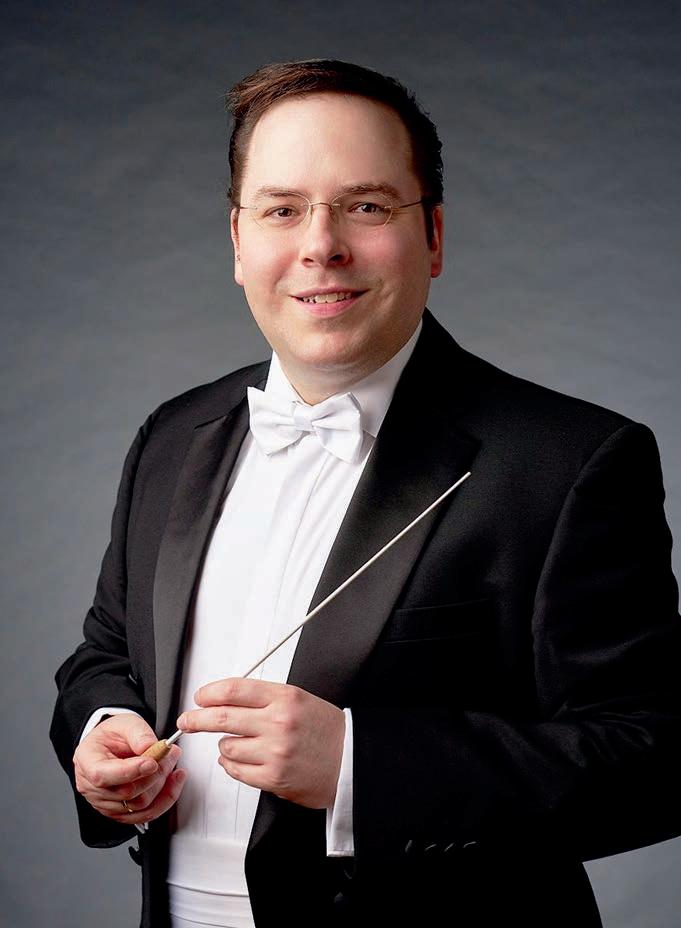
Feddeck was previously appointed to The Cleveland Orchestra’s conducting staff in 2009, during which he also served as Music Director of The Cleveland Orchestra Youth Orchestra and led their first European tour.
Feddeck is a graduate of the Oberlin Conservatory of Music, where he received the Outstanding Alumni Award, and the Aspen Music Festival and School, which awarded him the Robert Harth and Aspen prizes. He was also the winner of the prestigious Solti Conducting Fellowship and the Sixth Vakhtang Jordania International Conducting Competition.
Yo -Yo Ma, cello
YO -YO M A ’ S M U LT I FA C E T E D C A R E E R is testament to his belief in culture’s power to generate trust and understanding. Whether performing new or familiar works for cello, bringing communities together to explore culture’s role in society, or engaging unexpected musical forms, Yo-Yo strives to foster connections that stimulate the imagination and reinforce our humanity.
Most recently, Yo-Yo began Our Common Nature, a cultural journey to celebrate the ways that nature can reunite us in pursuit of a shared future. Our Common Nature follows the Bach Project, a 36-community, six-continent tour of J.S. Bach’s cello suites paired with local cultural programming. Both endeavors reflect Yo-Yo’s lifelong commitment to stretching the boundaries of genre and tradition to understand how music helps us to imagine and build a stronger society.
Among his many roles, Yo-Yo is a United Nations Messenger of Peace, the first artist ever appointed to the World Economic Forum’s board of trustees, a member of the board of Nia Tero, and the founder of the global music collective Silkroad.
His discography of more than 120 albums (including 19 Grammy Award winners) ranges from iconic renditions of the Western classical canon to recordings that defy categorization, such as Hush with Bobby McFerrin and The Goat Rodeo Sessions with Stuart Duncan, Edgar
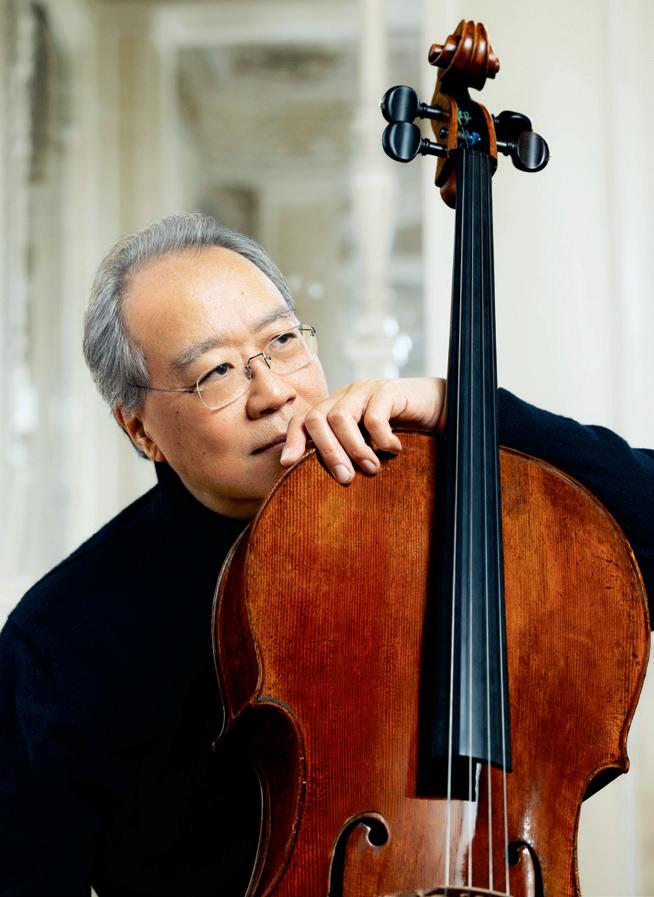
Meyer, and Chris Thile. Yo-Yo’s recent releases include a series of Beethoven recordings with pianist Emanuel Ax and violinist Leonidas Kavakos. Yo-Yo was born in 1955 to Chinese parents living in Paris, where he began studying the cello with his father at age 4 When he was 7, he moved with his family to New York City, where he continued his cello studies before pursuing a liberal arts education. He has received numerous awards, including the Avery Fisher Prize, National Medal of the Arts, Presidential Medal of Freedom, Kennedy Center Honors, Polar Music Prize, and Birgit Nilsson Prize. He has performed for nine American presidents, most recently on the occasion of President Biden’s inauguration.
Yo-Yo and his wife have two children He plays four cellos: two modern instruments made by Moes & Moes, a 1733 Montagnana from Venice, and the 1712 Davidoff Stradivarius

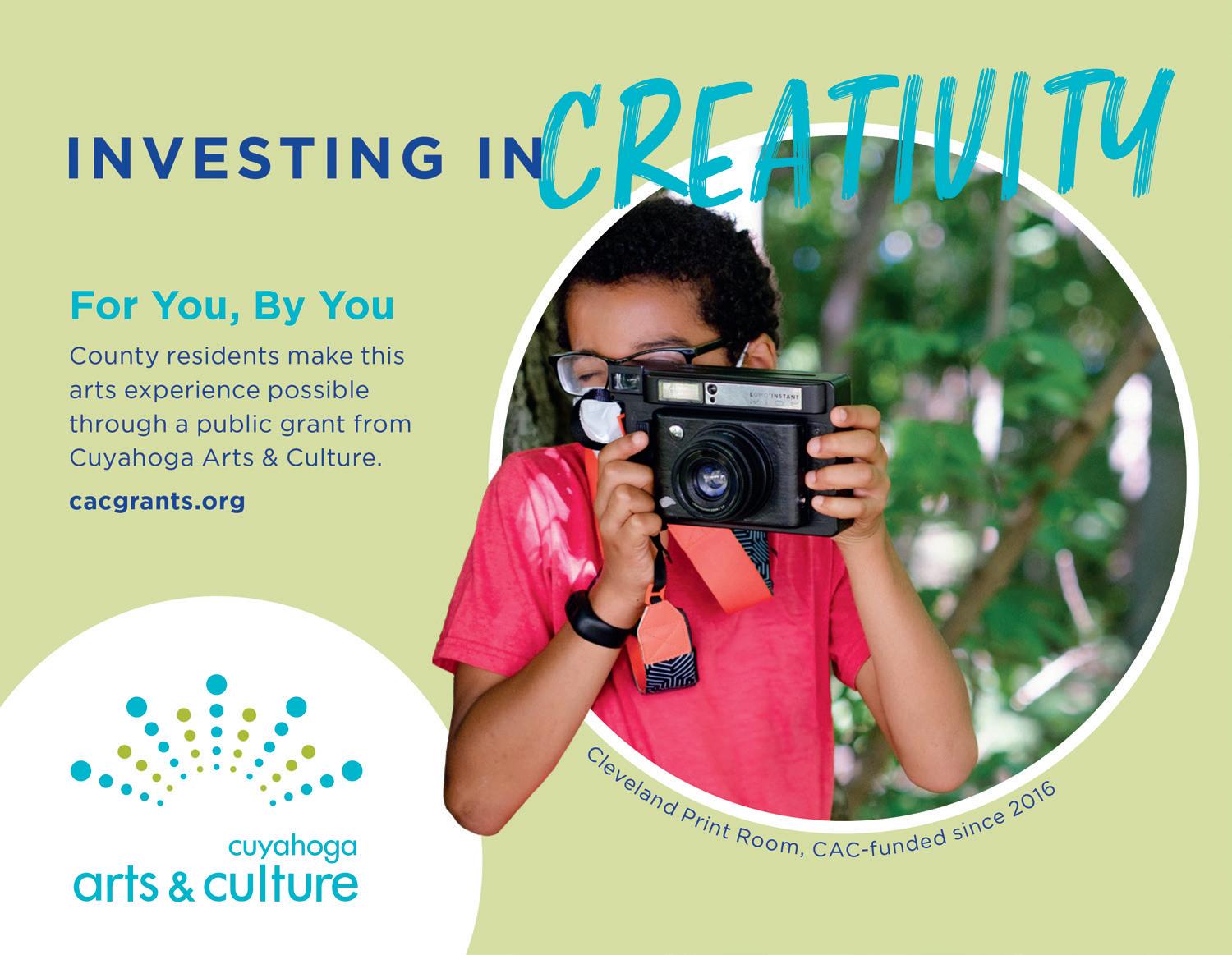
N O W F I R M LY I N I T S S E C O N D C E N T U RY ,
The Cleveland Orchestra, under the leadership of Franz Welser-Möst since 2002, is one of the most sought-after performing ensembles in the world. Year after year, the ensemble exemplifies extraordinary artistic excellence, creative programming, and community engagement. In recent years, The Ne w York Times has called Cleveland “the best in America” for its virtuosity, elegance of sound, variety of color, and chamber-like musical cohesion.
Founded by Adella Prentiss Hughes, the Orchestra performed its inaugural concert in December 1918. By the middle of the century, decades of growth and sustained support had turned the ensemble into one of the most admired around the world.
The past decade has seen an increasing number of young people attending concerts, bringing fresh attention to The Cleveland Orchestra’s legendary sound and committed programming. More recently, the Orchestra launched several bold digital projects, including the streaming platform Adella.live and its own recording label. Together, they have captured the Orchestra’s unique artistry and the musical achievements of the Welser-Möst and Cleveland Orchestra partnership.
The 2025 – 26 season marks Franz Welser-Möst’s 24th year as Music Director, a period in which The Cleveland

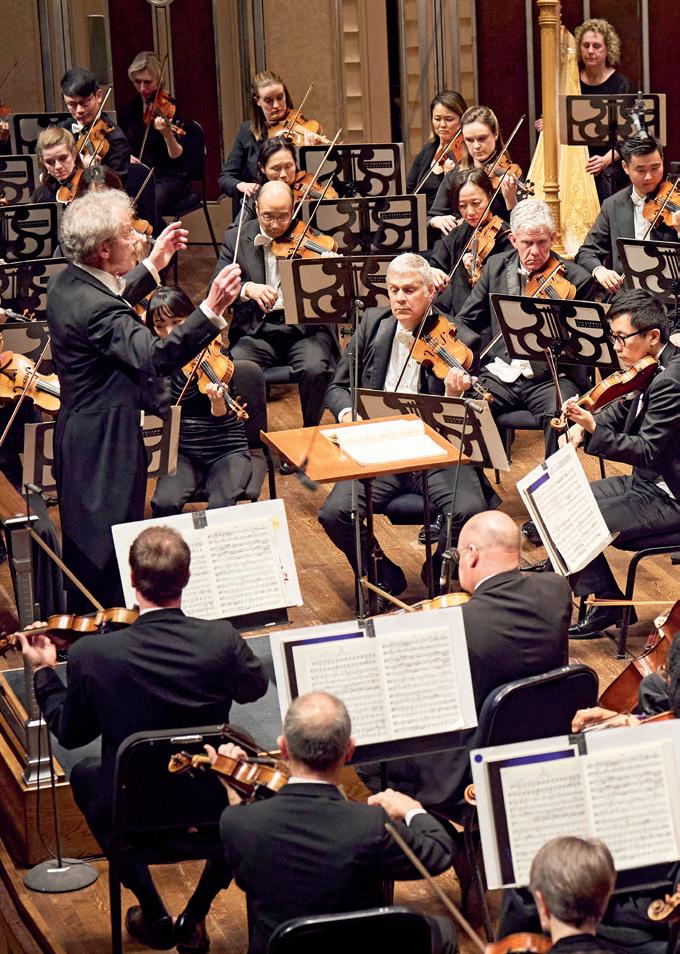
Orchestra has earned unprecedented acclaim around the world, including a series of residencies at the Musikverein in Vienna, the first of its kind by an American orchestra, and a number of celebrated opera presentations.
Since 1918, seven music directors
Nikolai Sokoloff, Artur Rodziński, Erich Leinsdorf, George Szell, Lorin Maazel, Christoph von Dohnányi, and Franz Welser-Möst have guided and shaped the ensemble’s growth and sound. Through concerts at home and on tour, broadcasts, and a catalog of acclaimed recordings, The Cleveland Orchestra is heard today by a growing group of fans around the world.

Franz Welser -Möst, Music Director
K E LV I N S M I T H FA M I LY C H A I R
F I R S T V I O L I N S
Joel Link
C O N C E RT M A S T E R
Blossom-Lee Chair
Liyuan Xie
F I R S T A S S O C I AT E
C O N C E RT M A S T E R
Virginia M. Lindseth, PhD, Chair
Jung-Min Amy Lee
A S S O C I AT E
C O N C E RT M A S T E R
Gretchen D. and Ward Smith Chair
Stephen Tavani
A S S I S TA N T
C O N C E RT M A S T E R
Dr. Ronald H. Krasney Chair
Wei-Fang Gu
Drs . Paul M. and Renate H.
Duchesneau Chair
Kim Gomez
Elizabeth and Leslie Kondorossy Chair
Chul-In Park
Harriet T. and David L . Simon Chair
Miho Hashizume
Theodore Rautenberg Chair
Jeanne Preucil Rose
Larry J B and Barbara S
Robinson Chair
Alicia Koelz
Oswald and Phyllis Lerner
Gilroy Chair
Yu Yuan
Patty and John Collinson Chair
Isabel Trautwein
Trevor and Jennie Jones Chair
Katherine Bormann
Analise Handke
Gladys B Goetz Chair
Zhan Shu
Youngji Kim
Paul and Lucille Jones Chair
Genevieve Smelser
S E C O N D V I O L I N S
Stephen Rose*
Alfred M and Clara T Rankin Chair
Eli Matthews1
Patricia M. Kozerefski and Richard J Bogomolny Chair
Jason Yu2
James and Donna Reid Chair
Sonja Braaten Molloy
Carolyn Gadiel Warner
Elayna Duitman
Ioana Missits
Jeffrey Zehngut^
Kathleen Collins
Beth Woodside
Emma Shook
Dr Jeanette Grasselli Brown and Dr Glenn R Brown Chair
Yun-Ting Lee
Deborah L . Neale Chair
Jiah Chung Chapdelaine
Gawon Kim
V I O L A S
Wesley Collins*
Chaillé H and Richard B
Tullis Chair
Stanley Konopka2
Mark Jackobs
Jean Wall Bennett Chair
Lisa Boyko
Richard and Nancy Sneed Chair
Richard Waugh
Lembi Veskimets
The Morgan Sisters Chair
Eliesha Nelson^
Anthony and Diane
Wynshaw-Boris Chair
Joanna Patterson Zakany
William Bender
Thomas Lauria and Christopher Lauria Chair
Gareth Zehngut^
This roster lists full-time members of The Cleveland Orchestra . The number and seating of musicians on stage varies depending on the piece being performed Seating within the string sections rotates on a periodic basis
C E L L O S
Mark Kosower*
Louis D Beaumont Chair
Richard Weiss1
The GAR Foundation Chair
Charles Bernard2
Helen Weil Ross Chair
Bryan Dumm
Muriel and Noah Butkin Chair
Tanya Ell
Thomas J and Judith Fay
Gruber Chair
Ralph Curry
Brian Thornton
William P. Blair III Chair
David Alan Harrell
Martha Baldwin
Dane Johansen
Marguerite and James Rigby Chair
Paul Kushious
B A S S E S
Maximilian Dimoff*
Clarence T. Reinberger Chair
Charles Paul1
Mary E . and F. Joseph
Callahan Chair
Derek Zadinsky2
Mark Atherton
Thomas Sperl
Henry Peyrebrune
Charles Barr Memorial Chair
Charles Carleton
Scott Dixon
Brandon Mason
H A R P
Trina Struble*
Alice Chalifoux Chair
F LU T E S
Joshua Smith*
Elizabeth M. and William C. Treuhaft Chair
Saeran St. Christopher
Jessica Sindell2^
Austin B and Ellen W Chinn Chair
Mary Kay Fink
P I C C O L O
Mary Kay Fink
Anne M and M Roger Clapp Chair
O B O E S
Frank Rosenwein*
Edith S Taplin Chair
Corbin Stair
Sharon and Yoash Wiener Chair
Jeffrey Rathbun2
Everett D. and Eugenia S .
McCurdy Chair
Robert Walters
E N G L I S H H O R N
Robert Walters
Samuel C and Bernette K
Jaffe Chair
C L A R I N E T S
Afendi Yusuf*
Robert Marcellus Chair
Robert Woolfrey
Victoire G and Alfred M
Rankin, Jr Chair
Daniel McKelway2
Robert R and Vilma L Kohn Chair
Amy Zoloto
E-F L AT C L A R I N E T
Daniel McKelway
Stanley L and Eloise M
Morgan Chair
B A S S C L A R I N E T
Amy Zoloto
Myrna and James Spira Chair
B A S S O O N S
John Clouser*
Louise Harkness Ingalls Chair
Gareth Thomas
Jonathan Sherwin
C O N T R A B A S S O O N
Jonathan Sherwin

H O R N S
Nathaniel Silberschlag*
George Szell Memorial Chair
Michael Mayhew§ Knight Foundation Chair
Jesse McCormick
Robert B. Benyo Chair
Hans Clebsch
Richard King
Meghan Guegold Hege^
T RU M P E T S
Michael Sachs*
Robert and Eunice Podis
Weiskopf Chair
Jack Sutte
Lyle Steelman2^
James P and Dolores D Storer Chair
Michael Miller
C O R N E T S
Michael Sachs*
Mary Elizabeth and G Robert Klein Chair
Michael Miller
T RO M B O N E S
Brian Wendel*
Gilbert W and Louise I
Humphrey Chair
Richard Stout
Alexander and Marianna C .
McAfee Chair
Shachar Israel2
B A S S T RO M B O N E
Luke Sieve
E U P H O N I U M &
B A S S T RU M P E T
Richard Stout
T U B A
Yasuhito Sugiyama*
Nathalie C Spence and Nathalie S Boswell Chair
T I M PA N I
Zubin Hathi*
Otto G. and Corinne T. Voss Chair
Peter Nichols2
Mr and Mrs Richard K
Smucker Chair
P E RC U S S I O N
Marc Damoulakis*
Margaret Allen Ireland Chair
Thomas Sherwood
Tanner Tanyeri
Peter Nichols
K E Y B OA R D
I N S T RU M E N T S
Carolyn Gadiel Warner
Marjory and Marc L
Swartzbaugh Chair
L I B R A R I A N
Michael Ferraguto*
Joe and Marlene Toot Chair
E N D O W E D C H A I R S
C U R R E N T LY
U N O C C U P I E D
Clara G and George P
Bickford Chair
Sandra L Haslinger Chair
Charles M and Janet G
Kimball Chair
Sunshine Chair
Rudolf Serkin Chair
Christoph von Dohnányi †
Taichi Fukumura A
Elizabeth Ring and William Gwinn Mather Chair
James Feddeck
Sidney and Doris Dworkin Chair
Lisa Wong
P and Chester C Bolton Chair * Principal
Associate Principal
First Assistant Principal
Assistant Principal ^ Alum of The Cleveland Orchestra Youth Orchestra † In Memoriam
5 / 2 6 S E A S O N
C A L E N D A R
FA L L
N OV 1 3 – 1 5
M A H LE R ’ S S I X T H
S Y M P H O N Y
Tugan Sokhiev, conductor
Robert Walters, English horn
G E O F F R E Y G O R D O N Mad Song
M A H L E R Symphony No. 6, “ Tragic”
N OV 2 0 – 2 3
DVO Ř Á K ’ S N E W
W O R LD S Y M P H O N Y
Dalia Stasevska, conductor
R E V U E LTA S La Noche de los Mayas*
D V O Ř Á K Symphony No. 9, “From the New World”
N OV 2 8 – 3 0
Y U J A WA N G P L AY S
R AV E L
Petr Popelka, conductor
Yuja Wang, piano
R AV E L Piano Concerto for the Left Hand
L I G E T I Concerto for Piano and Orchestra
M U S S O R G S K Y/ R AV E L Pictures at an Exhibition
D E C 4 – 6
H A N D E L’ S M E S S I A H
Bernard Labadie, conductor
Liv Redpath, soprano
Tim Mead, countertenor
Andrew Haji, tenor
Philippe Sly, bass-baritone
The Cleveland Orchestra Chorus
H A N D E L Messiah
W I N T E R
J A N 8 – 10
M O Z A RT ’ S J U P I T E R
S Y M P H O N Y
Franz Welser-Möst, conductor
M O Z A RT Symphony No. 41, “Jupiter”
S H O S TA KO V I C H Symphony No. 11, “ The Year 1905”
J A N 1 5 , 1 7 & 1 8
V E R D I ’ S R E Q U I E M
Franz Welser-Möst, conductor
Asmik Grigorian, soprano
Deniz Uzun, mezzo-soprano
Joshua Guerrero, tenor
Tareq Nazmi, bass
The Cleveland Orchestra Chorus
V E R D I Requiem
F E B 5 – 7
H A D E LI C H P L AY S
M E N D E L S S O H N
Antonello Manacorda, conductor
Augustin Hadelich, violin
M E N D E L S S O H N Violin Concerto
S C H O E N B E R G Chamber
Symphony No. 2
S C H U B E RT Symphony No. 8, “Unfinished”
F E B 1 2 & 14
H A N N I G A N C O N D U C T S
G E R S H W I N
Barbara Hannigan, conductor
Johanna Wallroth, soprano
C R U M B A Haunted Landscape
R U G G L E S Sun-Treader
B A R B E R Knoxville: Summer of 1915
G E R S H W I N Porgy and Bess: A Symphonic Picture (arr. Bennett)
R E C I TA L
F E B 1 7
M AO F U J I TA I N R E C I TA L
Mao Fujita, piano
Works by Beethoven, Wagner, Berg, Mendelssohn, and Brahms
F E B 1 9 – 2 1
F R E N Z I E D TA N G O
John Adams, conductor
Aaron Diehl, piano
I V E S From Greenland’s Icy Mountains*
T I M O A N D R E S Made of Tunes J O H N A D A M S Frenzy: a short symphony
P I A Z Z O L L A La Mufa (arr. Adams)*
P I A Z Z O L L A Oblivion (arr. Adams)*
P I A Z Z O L L A Libertango (arr. Adams)
F E B 2 6 – 2 8
S T R AU S S ’ S D O N J UA N
Alain Altinoglu, conductor
Alisa Weilerstein, cello
U N S U K C H I N Cello Concerto
R . S T R A U S S Till Eulenspiegel’s
Merry Pranks
R . S T R A U S S Don Juan
M A R 5 , 7 & 8
B R A H M S ’ S T H I R D
S Y M P H O N Y
Jakub Hrůša, conductor
B R A H M S Symphony No. 3
M A RT I N Ů Symphony No. 3
K A P R Á L O VÁ Military Sinfonietta
M A R 1 2 – 1 5
B E E T H OV E N ’ S
FAT E F U L F I F T H
Elim Chan, conductor
Michael Sachs, trumpet
S T R AV I N S K Y Suite from Pulcinella
H AY D N Trumpet Concerto
B E E T H O V E N Symphony No. 5
R E C I TA L M A R 1 7 T H E K A N N E H - M A S O N S
I N R E C I TA L
Sheku Kanneh-Mason, cello
Isata Kanneh-Mason, piano
Works by Mendelssohn, N. Boulanger, R. Schumann, and Clarke M A R 1 9 – 2 1
C H A N C O N D U C T S B A RTÓ K
Elim Chan, conductor
Patricia Kopatchinskaja, violin
D A N I E L K I D A N E Sun Poem*
B A RT Ó K Violin Concerto No. 1 B A RT Ó K Dance Suite* S C R I A B I N The Poem of Ecstasy
* Not performed on the Friday matinee concert
clevelandorchestra . com
S P R I N G
A P R 2 – 4
D E B U S S Y ’ S L A M E R
Daniele Rustioni, conductor
Paul Jacobs, organ
FA U R É Suite from Pelléas et Mélisande
P O U L E N C Concerto for Organ, Strings , and Timpani
C A S E L L A Italia
D E B U S S Y La mer
A P R 9 – 1 1
S C H U B E RT &
S H O S TA KOV I C H
Santtu-Matias Rouvali, conductor
Sol Gabetta, cello
S H O S TA KO V I C H Cello Concerto No. 2
S C H U B E RT Symphony No 9, “ The Great”
R E C I TA L
A P R 1 6
A LE X A N D R E
K A N TO RO W I N R E C I TA L
Alexandre Kantorow, piano
Works by J.S. Bach, Medtner, Chopin, Scriabin, and Beethoven
A P R 2 3 , 2 5 & 2 6
B R I T T E N ’ S WA R R E Q U I E M
Daniel Harding, conductor
Tamara Wilson, soprano
Andrew Staples, tenor
Ludwig Mittelhammer, baritone
The Cleveland Orchestra Chorus
The Cleveland Orchestra Children’s Chorus
B R I T T E N War Requiem
A P R 3 0 & M AY 2
M E N D E L S S
Jörg Widmann, conductor J Ö R G W I D M A N N Fanfare for Ten Brass Instruments J Ö R G W I D M A N N Con brio
Danse macabre
Symphony No. 5, “Reformation” R E C I TA L M AY 5
M A RC - A N D R É H A M E LI N & M A R I A J OÃO P I R E S I N R E C I TA L
Marc-André Hamelin, piano
Maria João Pires, piano Program to be announced
Generous support for the 2025 – 26 Recital Series provided by the Art of Beauty Company, Inc.

• Attend concerts
• Watch videos
• Take quizzes
• Give feedback
M AY 7 – 9
WAG N E R ’ S
G ÖT T E R DÄ M M E RU N G
Franz Welser-Möst, conductor
Jörg Widmann, clarinet
P RO KO F I E V Symphony No 1, “Classical”
O L G A N E U W I RT H Zones of Blue*
WA G N E R Excerpts from Götterdämmerung
M AY 1 6 , 2 1 & 24
B E E T H OV E N ’ S F I D E LI O
Franz Welser-Möst, conductor
Malin Byström, soprano (Leonore)
David Butt Philip, tenor (Florestan)
Tomasz Konieczny, bass-baritone (Don Pizarro)
Martin Summer, bass (Rocco)
Dashon Burton, bass-baritone (Don Fernando)
Ashley Emerson, soprano (Marzelline)
Owen McCausland, tenor (Jaquino)
The Cleveland Orchestra Chorus
B E E T H O V E N Fidelio
Opera presentation sung in German with projected supertitles
M AY 2 2
H E RO ’ S S O N G
Franz Welser-Möst, conductor
Leila Josefowicz, violin
Trina Struble, harp
A D O L P H U S H A I L S T O R K Epitaph for a Man Who Dreamed
B A C E W I C Z Symphony No 4
J Ü R I R E I N V E R E Concerto for Violin, Harp, and Orchestra
D V O Ř Á K Hero’s Song
• Exclusive content
• F R E E season of Adella with 3000 Rewards points
• V I P experiences , seat upgrades & more
Y O U R V I S I T
L AT E S E AT I N G
As a courtesy to audience members and musicians , late-arriving patrons are asked to wait quietly until the first convenient break in the program. These seating breaks are at the discretion of the House Manager in consultation with the performing artists .
C E L L P H O N E S , WAT C H E S &
O T H E R D E V I C E S
To ensure a quiet and respectful listening environment , please silence all electronic devices .
P H O T O G R A P H Y, V I D E O G R A P H Y & R E C O R D I N G
Audio recording, photography, and videography are not allowed during performances at Severance Photographs can only be taken when the performance is not in progress .
In consideration of others , please reduce the volume on hearing aids and other health-assistive devices that may produce noise. For Infrared Assistive-Listening Devices , please see an usher. To request one in advance, email info@cleveland orchestra .com.
I N T H E E V E N T
O F A N E M E RG E N C Y
Contact an usher or a member of house staff if you require medical assistance. Emergency exits are clearly marked throughout the building Ushers and house staff will provide instructions in the event of an emergency A G E G U I D E L I N E S
Regardless of age, each person must have a ticket and be able to sit quietly in a seat throughout the
T H E C L E V E L A N D O R C H E S T R A A P P
Official Mobile App of TCO

Explore upcoming concerts , purchase and access your tickets , receive performance updates , and more .
For more information and direct links to download, visit clevelandorchestra .com/tcoapp or scan the code with your smartphone camera to download the app for iPhone or Android.
Available for iOS and Android on Google Play and at the Apple App Store

performance. Classical Season subscription concerts are not recommended for children under 8. However, there are several ageappropriate series designed specifically for children and youth, including Music Explorers (for 3 to 6 years old) and Family Concerts (for ages 7 and older) F O O D & M E RC H A N D I S E
Beverages and snacks are available at bars throughout Severance Music Center Only bottled water is permitted in the hall For Cleveland Orchestra apparel, recordings , and gift items , visit the Welcome Desk in Lerner Lobby.
T E L L U S A B O U T YO U R
E X P E R I E N C E
We are so glad you joined us! Want to share about your time at Severance? Send your feedback to cx@clevelandorchestra .com. Hearing directly from you will help us create the best experience possible.
The Cleveland Orchestra is grateful to the following organizations for their ongoing generous support of The Cleveland Orchestra: the State of Ohio and Ohio Arts Council and to the residents of Cuyahoga County through Cuyahoga Arts and Culture
Cleveland Orchestra performances are broadcast as part of regular programming on ideastream/WCLV Classical 90.3 FM, Saturdays at 8 PM and Sundays at 4 PM.
The Cleveland Orchestra is proud of its long-term partnership with Kent State University, made possible in part through generous funding from the State of Ohio
The Cleveland Orchestra is proud to have its home, Severance Music Center, located on the campus of Case Western Reserve University, with whom it has a long history of collaboration and partnership.
©2025 The Cleveland Orchestra and the Musical Arts Association Program books for Cleveland Orchestra concerts are produced by The Cleveland Orchestra and are distributed free to attending audience members
E D I T O R I A L
Kevin McBrien, Editorial & Publications Manager, The Cleveland Orchestra kmcbrien@clevelandorchestra .com
Ellen Sauer Tanyeri, Archives & Editorial Assistant, The Cleveland Orchestra
D E S I G N
Elizabeth Eddins, Eddinsdesign eddinsdesign@gmail com
A D V E R T I S I N G Live Publishing Company, 216-721-1800









